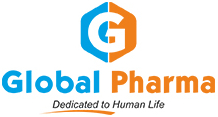Olanzapine
Olanzapine is an antipsychotic medication that affects chemicals in the brain.
Olanzapine is used to treat the symptoms of psychotic conditions such as schizophrenia and bipolar disorder (manic depression) in adults and children who are at least 13 years old. Olanzapine is sometimes used together with other antipsychotic medications or antidepressants.
Olanzapine may also be used for purposes not listed in this medication guide.
Certificate of Analysis
- Description
A Yellow colour crystalline powder.
Result
Yellow colour crystalline powder.
- Identification By IR
An IR spectrum of sample is concordant with IR spectrum of Olanzapine working standard.
Result
Complies.
- Related Substances by HPLC
Result - Any individual impurity
NMT 0.50 %
Result
0.09 %
- Total impurity
NMT 2.00 %
Result
0.14 %
- Heavy Metals
NMT 10 ppm.
Result
Complies.
- Sulphated Ash
NMT 0.10 % w/w.
Result
0.06 % w/w.
- Water Content
NMT 1.00 % w/w.
Result
0.21 % w/w.
- Assay
Between 98.0 % to 102.0 % on dried basis.
Result
99.6 % w/w.
Note: Note: – We are leading channel partner of much API manufacturer, supplier & exporters and Pharmaceutical raw material in Colombo, Chili, Ecuador and Globally.
Material Safety Data Sheet
-
Section 1 – Chemical Product
Product Identifier
Olanzapine
MSDS Prepared By
R&D Department
-
Section 2 – Composition / Information Of Ingredients
Product Name
Olanzapine
Synonym
2-Methyl-4-(-4-methyl-1-piperazinyl)10H-thieno[2,3-b]
Molecular Formula
C17H20N4S
Molecular Weight
312.43
CAS Number
132539-06-1
-
Section 3 – HAZARDOUS IDENTIFICATION
Precautionary statements
Hazardous in case of ingestion, Wear suitable Protective clothing and gloves. Harmful by inhalation, in contact with skin and if Swallowed. Not considered hazardous when handled under normal conditions with good house-keeping.
-
Section 4 – FIRST AID
Skin Contact
Immediately wash skin with soap and copious amounts of water for at least 15 minutes. If irritation persists, seek medical attention.
Eye Contact
Immediately flush eyes with copious amounts of water for At least 15 minutes. Seek medical advice.
Inhalation
Remove to fresh air. If not breathing give artificial respiration. If breathing is difficult, give oxygen. Seek medical attention.
Ingestion
If swallowed, wash out mouth with water, provided person is conscious. Seek medical advice. Remove and wash/dispose of contaminated clothing promptly.
-
Section 5 – FIRE FIGHTING MEASURES
Flammability of the Product
May be combustible at high temperature.
Fire Fighting Media and Instructions
Small Fire
Use Dry chemical powder, Carbon dioxide.
Large Fire
Use water spray, fog or foam.
Special Fire-fighting
Wear self-contained breathing apparatus and protective Procedures clothing to prevent contact with skin and eyes.
Unusual fire and Explosion Hazard
Emits toxic fumes under fire conditions.
-
Section 6 – ACCIDENT RELEASE MEASURES
Accessories
Wear respirator, Chemical safety goggles, Rubber gloves.
Spill
Use appropriate tools to put the spilled solid in a convenient waste disposal container. Finish cleaning by spreading water on the contaminated surface and dispose of according to local and regional authority requirements. Ensuring personal safety, mark out contaminated area with signs and prevent unauthorized access. Turn leaking containers up to prevent further Evacuate area. Wear self- contained breathing apparatus, rubber boots & heavy rubber gloves. Sweep-up/absorb in suitable material, place in a container and hold for disposal. Avoid raising dust. Ventilate area and wash spill site after pick-up complete.
-
Section 7 – HANDLING AND STORAGE
Storage
Keep container dry. Store at room temperature and protect from light.
-
Section 8 – EXPOSURE CONTROLS / PERSONAL PROTECTION
Engineering Controls
Use process enclosures, local exhaust ventilation, or other engineering controls to keep airborne levels below recommended exposure limits. If user operations generate dust, fume or mist, use ventilation to keep exposure to airborne contaminants below the exposure limit.
Personal Protective Protection
Safety shower and Eye bath.
Personal Protection in Case of a Large Spill
Splash goggles. Full suit. Dust respirator. Boots. Gloves. Wash thoroughly after handling. Do not breathe dust Avoid contact with eyes, skin and clothing.
-
Section 9 – PHYSICAL AND CHEMICAL PROPERITIES
Physical state and appearance
Yellow crystalline powder
Color
A Brown to Yellow Crystalline Powder
Odor
Almost Odorless
Melting Range
195ºc
-
Section 10 – STABILITY AND REACTIVITY
Chemical Stability
Stable under normal temperatures and pressures.
Conditions to avoid
Unknown
Materials to avoid
Unknown
Hazardous decomposition products
Carbon dioxide, carbon monoxide, HF & nitrogen oxides
-
Section 11 – TOXICOLOGICAL INFORMATION
Acute Effects
Harmful if swallowed.
-
Section 12 – ECOLOGICAL INFORMATION
Ecotoxicity
N/A
BOD5 and COD
N/A
Products of Biodegradation
N/A
-
Section 13 – DISPOSAL CONSIDERATION
General Information
Dissolve or mix material with a suitable combustible solvent and incinerate in a chemical incinerator equipped with an afterburner and scrubber. Material should be disposed of in keeping with all local and national legislation. Packaging should be disposed of in keeping with all local and national legislation. Handle contaminated containers as product.
-
Section 14 – TRANSPORT INFORMATION
DOT Classification
Not Restricted item according to the current IATA dangerous goods manual.
-
Section 15 – REGULATORY INFORMATION
European Information
Caution
In case of contact with eyes, rinse immediately with plenty of water and seek medical advice.
Protective Equipment
Gloves. Lab Coat. Dust respirator. Be sure to use an approved / certified respirator or equivalent. Safety glasses.
-
Section 16 – OTHER INFORMATION
Global Pharma provides information contained herein in good faith but makes no representation as to its comprehensives or accuracy. This document is intended only as a guide to the appropriate precautionary handling of the material by a properly trained person using this product.
Individuals receiving the information must exercise their independent judgment in determining its appropriateness for a particular purpose.
GLOBAL PHARMA MAKES NO REPRESENTATIONS OR WARRANTIES, EITHER EXPRESSED OR IMPLIED, INCLUDING WITHOUT LIMITATION ANY WARRANTIES OR MERCHANTABILITY, FITNESS FOR A PARTICULER PURPOSE WITH RESPECT TO THE INFORMATION SET FORTH HEREIN OR THE PRODUCT WHICH THE INFORMATION REEFERS. GLOBAL PHARMA WILL NOT BE RESPONSIBLE FOR DAMAGES RESULTING FROM USE OF RELIANCE UPON THIS INFORMATION.
